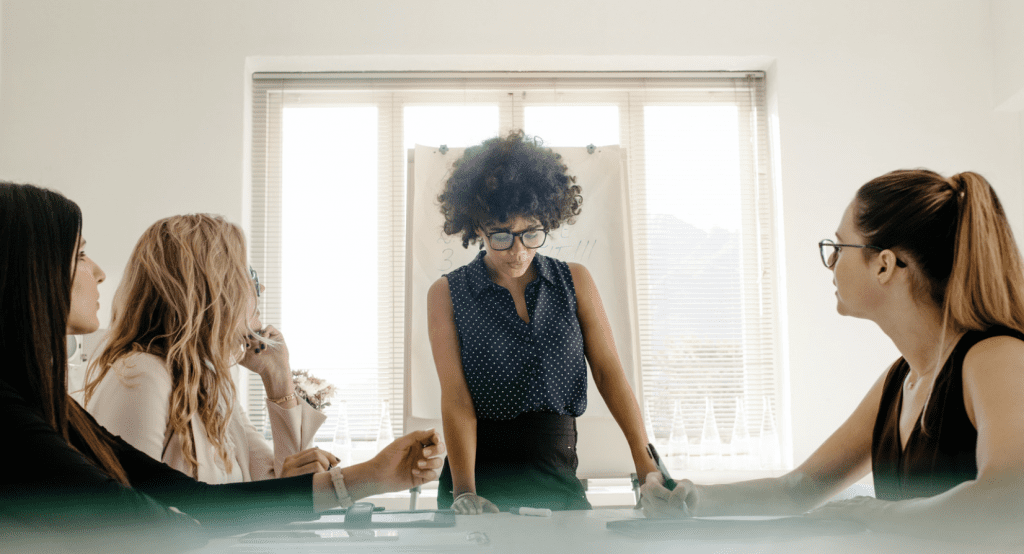 A few months ago, I attended a small regional conference here in Madison for the first time, and was not at all surprised to find I was one of very few people of color present, as I often am. The keynote speaker was a former colleague, who was speaking on behalf of the Madison Police Department. I was pleased to see his talk was about unconscious (or implicit) bias.
A few months ago, I attended a small regional conference here in Madison for the first time, and was not at all surprised to find I was one of very few people of color present, as I often am. The keynote speaker was a former colleague, who was speaking on behalf of the Madison Police Department. I was pleased to see his talk was about unconscious (or implicit) bias.
If you are not familiar with the concept, unconscious bias refers to the attitudes, stereotypes or beliefs we hold about people based on their (usually visible) identities, without us even really being aware of them. These beliefs have an automatic effect on our actions, particularly in response to certain types of people – most commonly, people who are not like us. Our brains are hard-wired to respond very quickly to information and therefore we can make snap judgments about others, based on their race, gender, age, weight, language, social status and more. Sadly, we can all make assumptions about other people or entire groups of people based on limited information and negative stereotypes we’ve learned throughout our lives.
To help demonstrate how unconscious bias can show up in all of us, the presenter led us through an insightful exercise called “What is this?” He showed us several different images to see what our automatic response was in naming or classifying what was depicted on the screen. He started with things that were easily identifiable, like an ant and a butterfly. But then, showed us an insect that was a little harder to identify with precision, yet featured the trademark yellow and black stripes of a bee. Yellow jacket, wasp, and honeybee were all guesses made from the crowd. To be specific, it turned out to be a yellow jacket wasp.
Next he showed us another picture of an insect similar in appearance, but a bit fuzzier than the first. That one turned out to be a bee.
And lastly, he showed us one more picture of an insect that resembled the first two, but in fact, was a harmless hoverfly. Even though hoverflys don’t have stingers, we all agreed that if we saw one flying around the room, we might assume it was a bee and that it could sting us just based on it’s features.
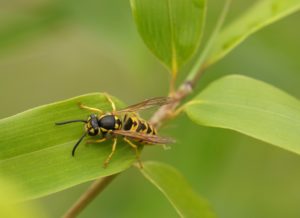
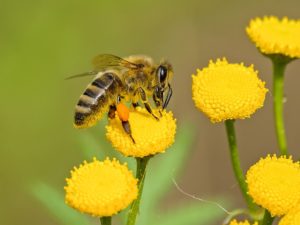
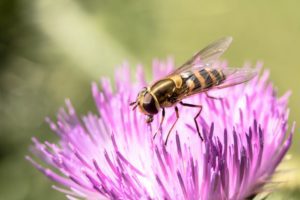
The lesson seemed to hit home with the folks in the room about the assumptions we might make about others based on appearances. The speaker reminded us that unconscious bias can show up anywhere and at anytime and that it’s up to us to try to recognize it when it rears its ugly head. And to try to reverse the automatic response that follows. One way to do this, he suggested, is to try to get to know people who are not like you and learn more about their personal experience and background.
After the morning’s lesson, you might imagine my surprise when I sat down for lunch next to one of the few women I knew at the conference (and a couple I didn’t), and found myself being ignored and excluded from the conversation at the table. While the three other women at my table sat there talking about summer vacations, the woman next to me actually turned her back towards me and faced the others, showing absolutely no interest in what I might offer to the discussion.
I was shocked and hurt, that evidently the keynote just two hours prior, had fallen on deaf ears. And not just on one, not even two, but on THREE people who then chose to disregard me as one of the few people of color in the room. Perhaps they made assumptions about me based on my identity…whether they recognized it or understood what they were doing, or not.
After about 20 minutes of quietly eating my lunch next to these women, I got up and left, not wanting to be subjected to the feelings of rejection I was experiencing any longer. I felt like I was in junior high. And it felt awful.
About a week later, I was standing in line at my favorite coffee shop, and initiated a conversation with the young woman in front of me. She was holding an adorable blonde-haired blue-eyed toddler who reminded me of my own. Yes, as a biracial woman, I have a blonde-haired, blue-eyed child, who inherited my curls, but his father’s everything else.
We talked about our sons and the milestones they had both reached thus far, and whether they were good sleepers or not. We asked each other about work and exchanged names and shook hands. After she placed her order, I offered to pay for her coffee and she was surprised and pleased and graciously accepted. As we walked out of the cafe, both of us with lattes in hand, she turned to me and said “Thank you for talking with me today. Women just don’t seem to talk to each other…this was really nice.” Her words really stuck with me. Especially after my experience at the conference the week before.
Ladies, we need to talk. We are setting examples for our children of how to treat others. They see how we interact with people who are different from us – and in turn are learning how to do the same. So, let’s be kind to one other. And not let preconceived notions about race, class, gender, social status, age, weight, etc. get in the way of that.
Let’s teach our children to smile at other people on the street. And let’s talk to the other women at the park while we are playing with our kids. Let’s engage with the moms in line ahead of us at the store. Let’s be sure to include those who are being left out of the conversation to ensure everyone feels they have a place at the table. And let’s challenge ourselves to do the things that push us out of our comfort zones and allow us to check our assumptions about people who are not like us.
There is so much negativity going on in the world today. Seriously. SO. MUCH. So, let’s be the change we wish to see. If not for ourselves – let’s do it for our kids.





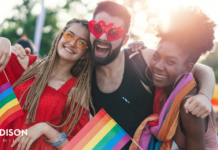







It is difficult for me to understand the authors perspective as a bi-racial woman, because I am white. However, I can completely identify with sitting awkwardly at a table and feeling like I was back in junior high. So that being said, I think that particular paragraph and feeling transcends any race issues. I think that there are women who are clique-ish and non-inclusive no matter what color you are.
I think the message of the article resonates with me regardless of color, because all mothers do share that common bond and it shouldn’t be so awkward to talk. I cannot tell you the times I have gone to pick up my children from daycare and tried to start a conversation with another mom to just sort of receive that “hey crazy lady why are you randomly talking to me” look.
While I do believe that some people may exclude others due to race or other traits, I find it personally so difficult to fathom. I know that I make perfectly conscious snap judgements about people, but it largely has to do with personal safety and their mannerisms (body language and facial expressions).
This article was great and hopefully will motivate all moms to talk!
Thanks for sharing your thoughts on and reactions to this post! As a person of color it can be very isolating to be the only, or one of few, non white people in the room, however, you are right, Social Exclusion is definitely a common occurrence and it never feels good no matter your race. There are so many things that divide us in this world and I chose to focus on our shared experiences, honoring our differences and learning from each other’s lived experience. Keep on reaching out to and trying to connect with other women. You never know when that connection will lead to a deeper friendship.
I love this! I don’t love what happened to you, or the history of exclusive experiences you may have had– but I love what you did to change things and connect with women around you. This was so well-written and insightful. Please keep sharing your story and how people can help each other heal from the divisive approach so many have taken to race in the past.
Thank you Ally!
This is a really great article Alicia. I’ve noticed this (myself included). When you are one of those people, you really have to make that conscious effort to not be because, like you said you’re probably doing it but don’t even realize it.
Thank you Michelle! You are right. All we can do is try to recognize and reverse it when it shows up and be open to new people, experiences and perspectives. And encourage others to do so as well.
Woah. So many things. First, I remember this article as one of my favorites of yours because of how you describe your interaction with the woman in the coffee shop – we definitely need more of that! However, I must acknowledge the pure white lens with which I read this article the first time. Second, three years ago, “bias training” was groundbreaking. Today we’re pushing for anti-racist active allyship training, which I think is great, even though so much more needs to be done. And third, three years ago you dealt with the person who wrote the first comment with grace, even though it’s clearly a microaggression. Although she may not see it that way, although I may have not seen it that way when I initially read it. However, I’m sure you did – how frustrating it must be to see people acknowledging something you’ve dealt with every single day of your life. I hope to do better.
What a great article! Thank you, Alicia! 🙂